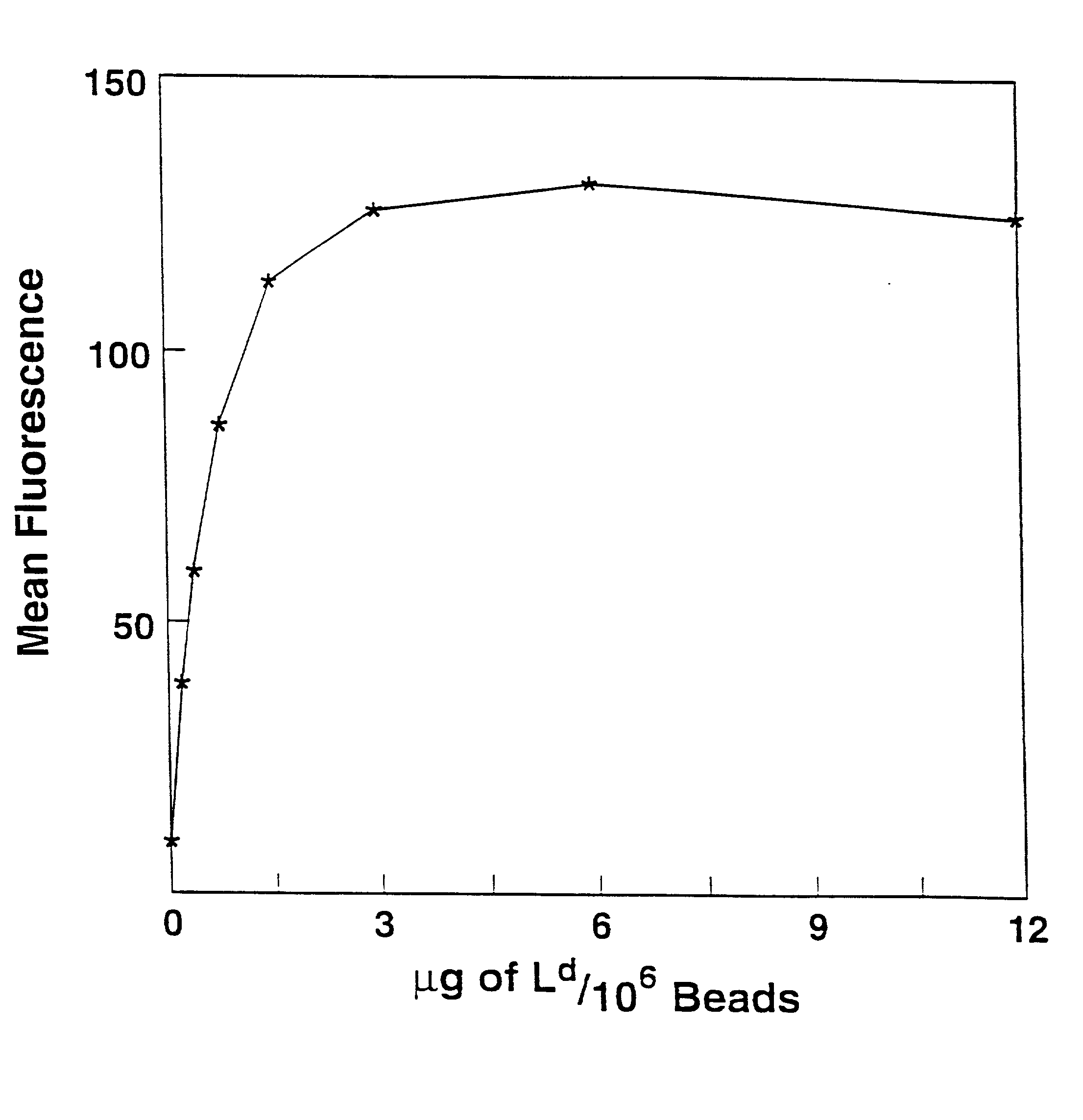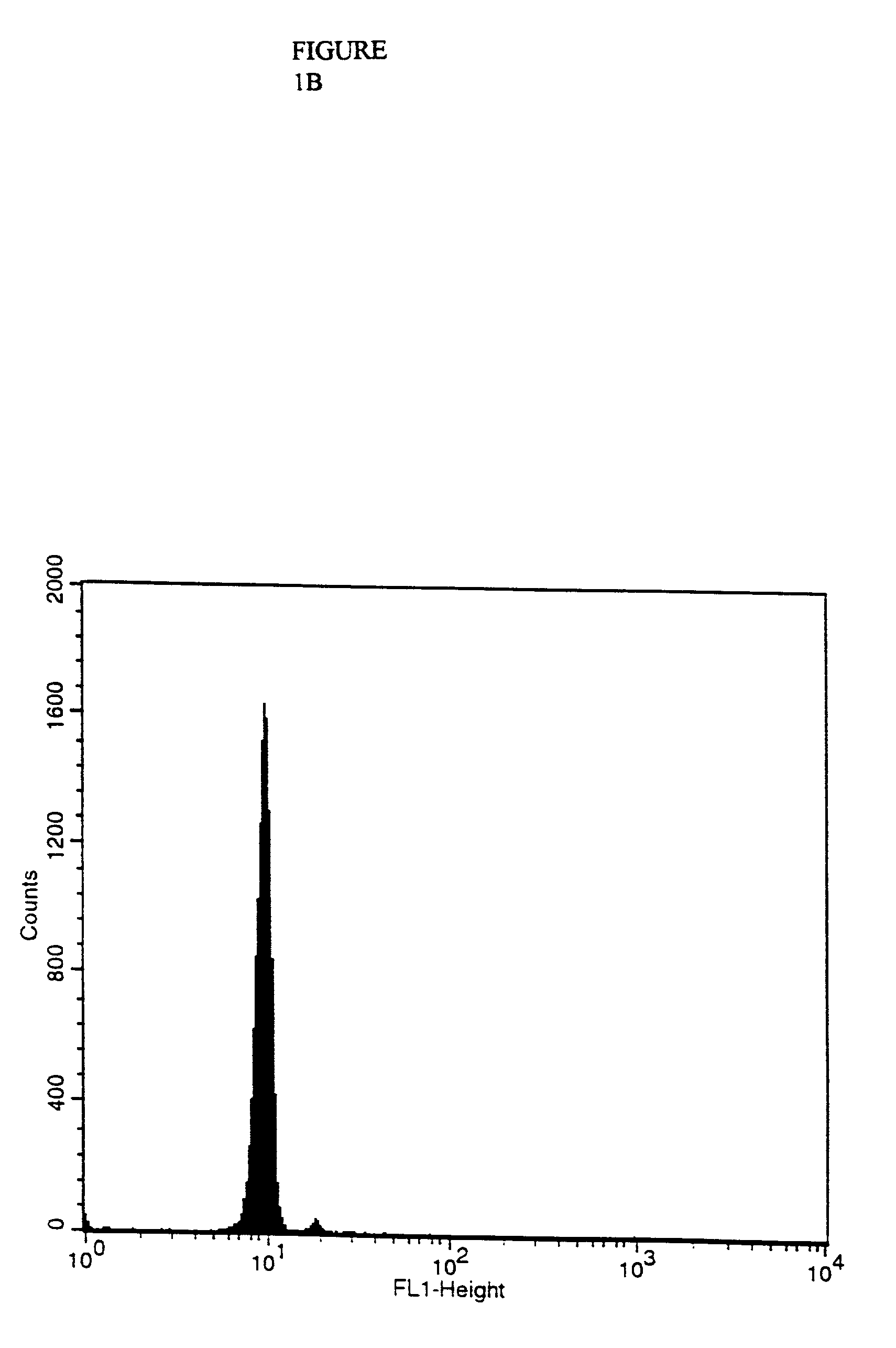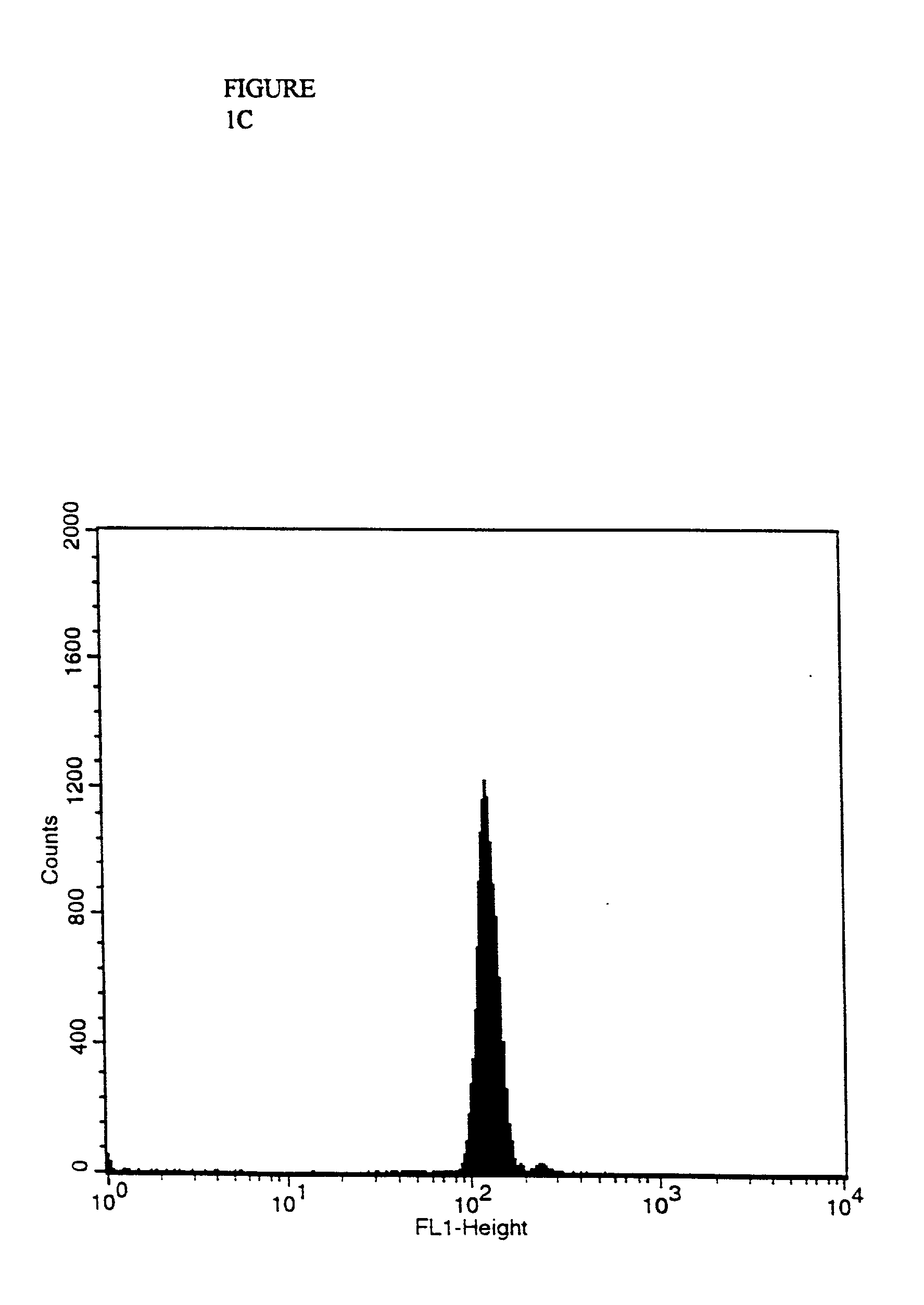Purification of antigen-specific t cells
a technology of antigen-specific t cells and purification, which is applied in the field of isolation and expansion in culture of antigen-specific t lymphocytes, can solve the problems of limited ex vivo immunotherapy for cancer or viral infections, and low precursor frequency
- Summary
- Abstract
- Description
- Claims
- Application Information
AI Technical Summary
Benefits of technology
Problems solved by technology
Method used
Image
Examples
example 2
[0024] Capture of Antigen-specific T Cells onto MHC Class I-coated Magnetic Beads in the Presence of Antigenic Peptides
[0025] Mice and cell lines. BALB / c (H-2.sup.d) and C57BL / 6 (H-2.sup.b) mice were from Harlan Sprague Dawley (San Diego, Calif.). 2C transgenic mice (Sha et al, 1988) were bred in R. W. Johnson P.R.I. vivarium. All mice were kept under specific pathogen free conditions. L.sup.d-expressing RMAS cells (Cai and Spent, 1996), and EL4 cells (H-2.sup.b, obtained from ATCC, Rockville, Md.) were used as target cells in CTL assays. The anti-clonotypic 1 B2 hybridoma was previously described (Kranz et al., 1994).
Purification of CD8.sup.+ T Cells from Normal Mice
[0026] Purification was performed at 4.degree. C. under sterile conditions. Mouse inguinal, axillary, cervical, iliac and mesenteric lymph nodes were dissected and separated into single cell suspension. Avidin-coated magnetic beads (Dynal, Lake Success, N.Y.) were coated with biotinylated goat anti-mouse Ig (Southern Bi...
example 3
[0034] Recovery of Antigen-specific T Cells Mixed with Irrelevant T Cells
[0035] T cell precursor frequencies in a naive animal are typically low. Magnetic beads have been found suitable in other systems to enrich low frequency cell populations (Sawada et al., 1990; Kato and Radbruch, 1993). To assess whether MHC class I-coated magnetic beads could be used for T cell precursor enrichment, we mixed fluorescein-labeled 2C T cells with CD8.sup.+T cells purified from naive C57BI / 6 mice. After incubation with MHC-coated magnetic beads in the presence of peptide, adsorbed cells were eluted and counted, and the percentage of 2C T cells was determined by flow cytofluorometry. In the experiment shown in FIG. 5, 2C T cells were undetectable at the initial frequency of 0.03%. Following adsorption using K.sup.bm3-coated beads and dEV-8 peptide, a definite peak of green fluorescence was observed, displaying the same intensity as the original fluorescein-stained 2C T cell population. This peak rep...
example 4
In vitro Isolation and Expansion of Antigen-specific CTL from Naive Mice
In Vitro Cell-mediated Cytotoxicity
[0036] L.sup.d-expressing RMA.S cells, EL4 cells (H-2.sup.b), MC57 cells (H-2.sup.b) infected with LCMV Armstrong (48h.; multiplicity of infection: PFU per cell) or BALB / c CL-7 cells (H-2d) infected with LCMV Armstrong (48h.; multiplicity of infection: 1 PFU per cell) were used as target cells. Target cells were loaded with 100 .mu.Ci of Na.sub.2.sup.51CrO.sub.4 (New England Nuclear, Wilmington, Del.) per 10.sup.6 cells at 37.degree. C. for 60 min, in the presence of 20% FCS. They were washed three times and aliquoted in 96 well plates at 4,000 to 10,000 cells per well. Peptides and effector cells were then added. Final volume was 200 .mu.l / well. Plates were incubated at 37.degree. C. for 5 hours. One hundred .mu.l of supernatant were collected and counted in a gamma counter. Percent specific lysis was calculated as previously reported (Wunderlich and Shearer, 1991).
In vivo Ass...
PUM
| Property | Measurement | Unit |
|---|---|---|
| Mass flow rate | aaaaa | aaaaa |
| Frequency | aaaaa | aaaaa |
| Affinity | aaaaa | aaaaa |
Abstract
Description
Claims
Application Information
 Login to View More
Login to View More - R&D
- Intellectual Property
- Life Sciences
- Materials
- Tech Scout
- Unparalleled Data Quality
- Higher Quality Content
- 60% Fewer Hallucinations
Browse by: Latest US Patents, China's latest patents, Technical Efficacy Thesaurus, Application Domain, Technology Topic, Popular Technical Reports.
© 2025 PatSnap. All rights reserved.Legal|Privacy policy|Modern Slavery Act Transparency Statement|Sitemap|About US| Contact US: help@patsnap.com



